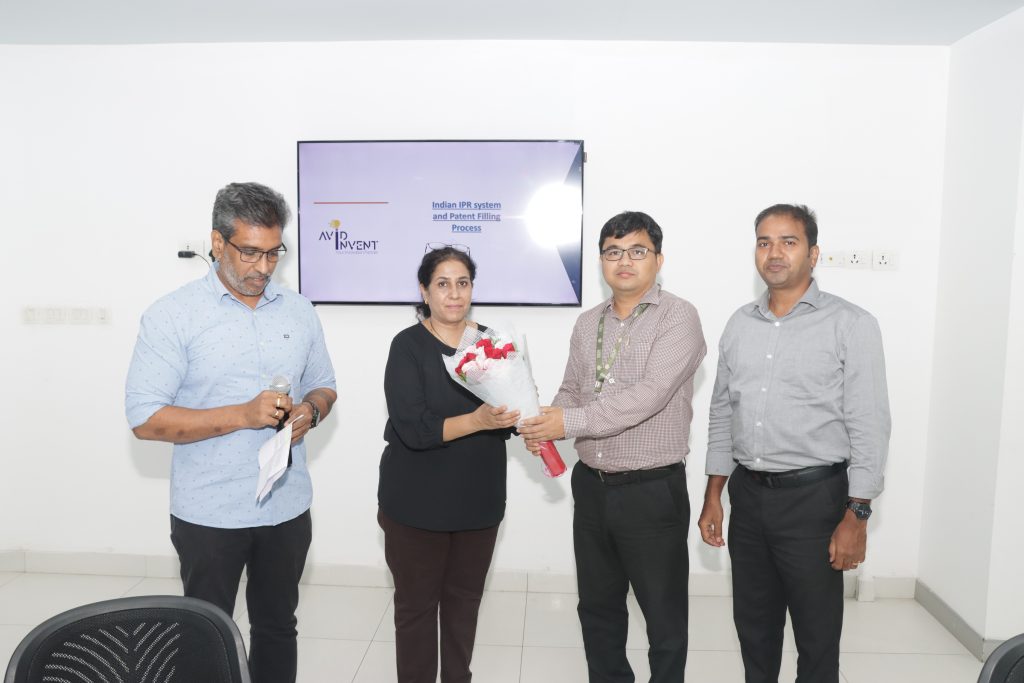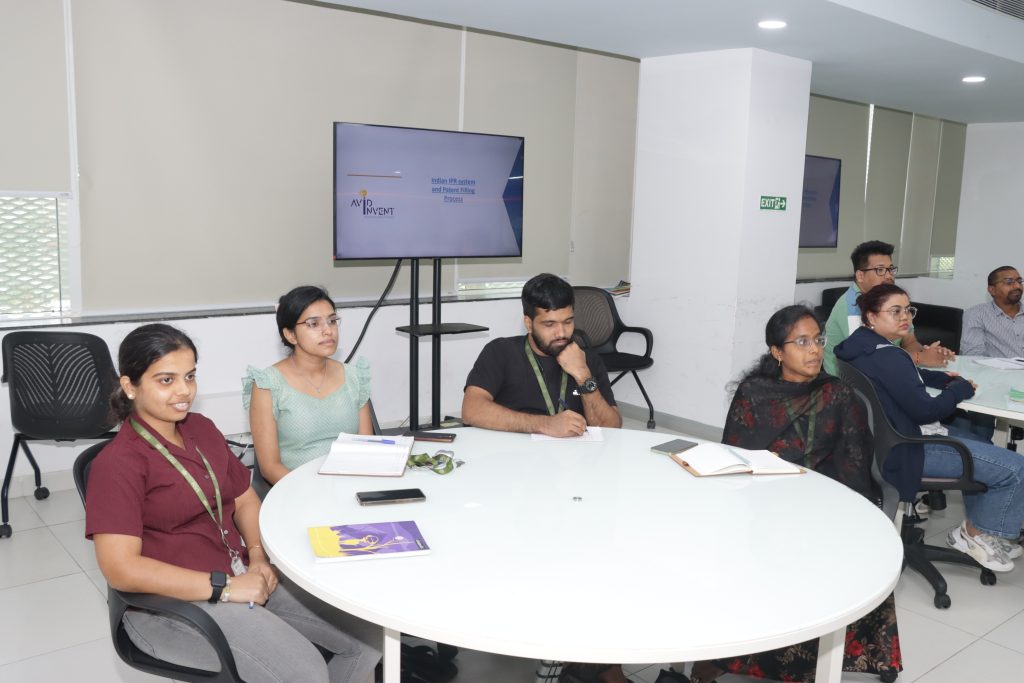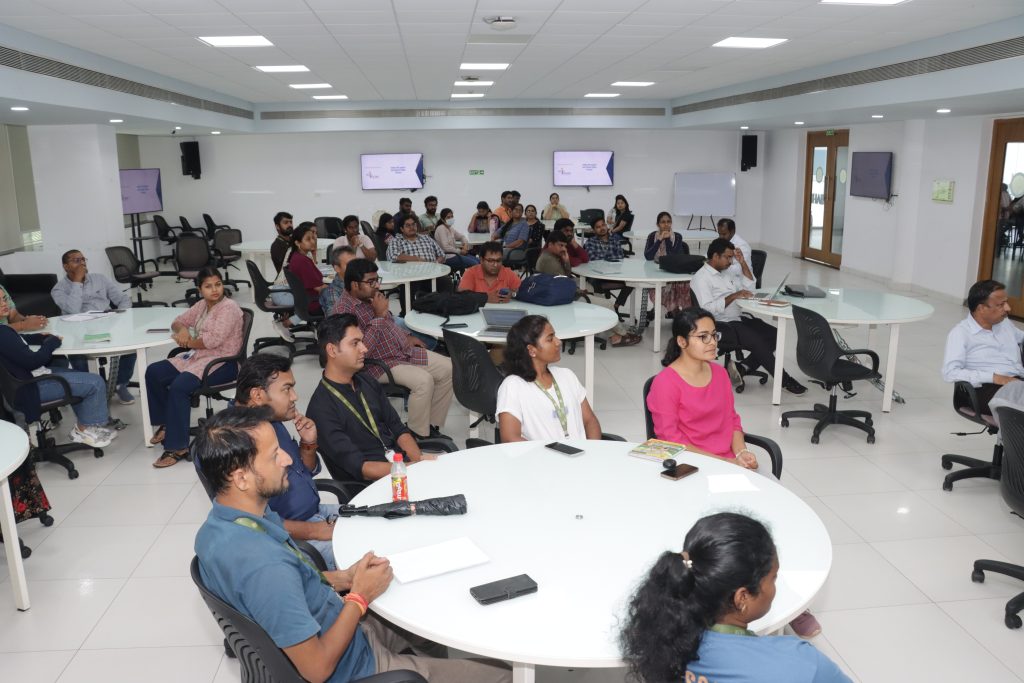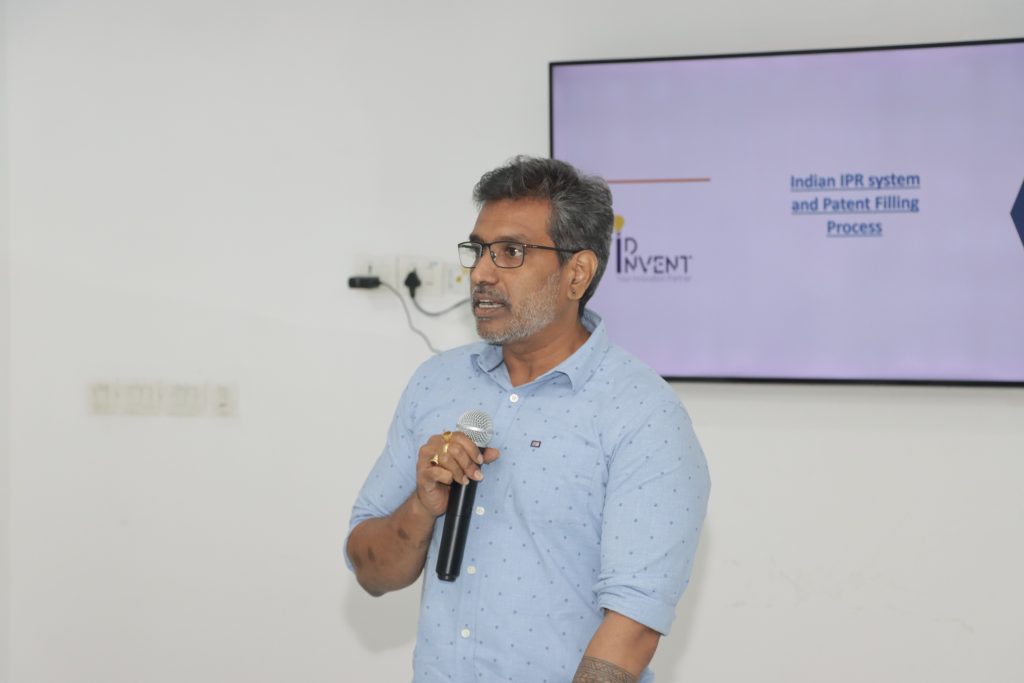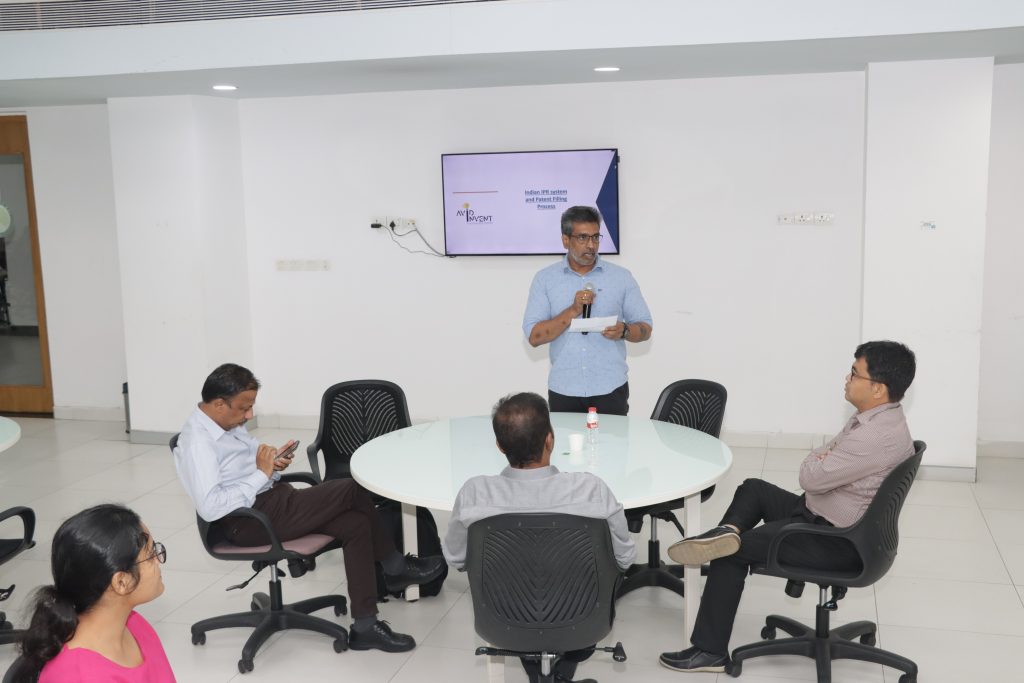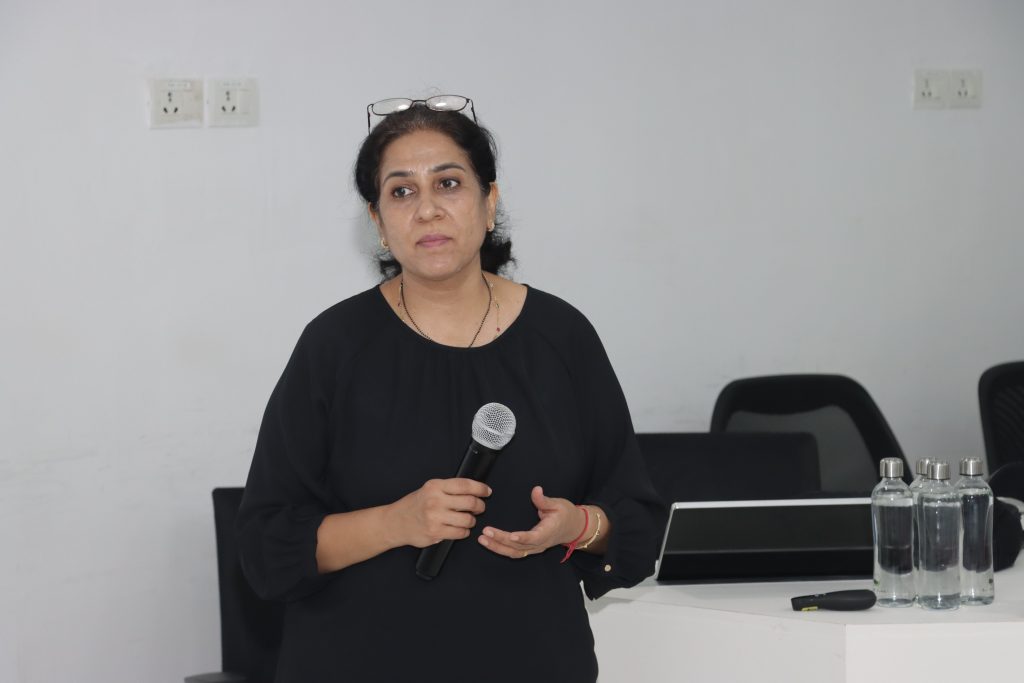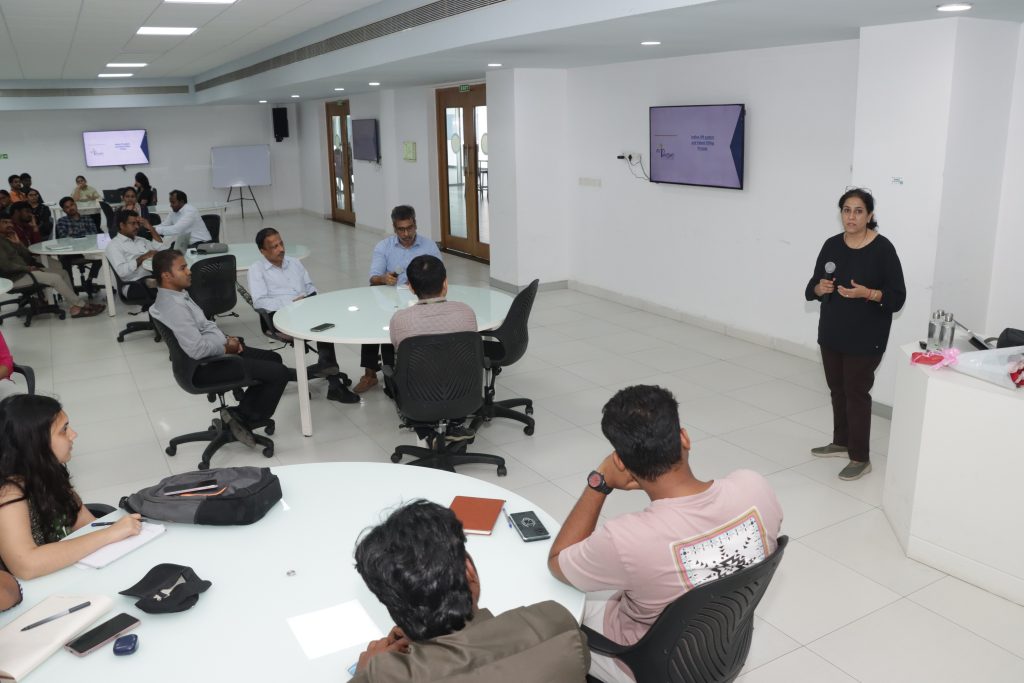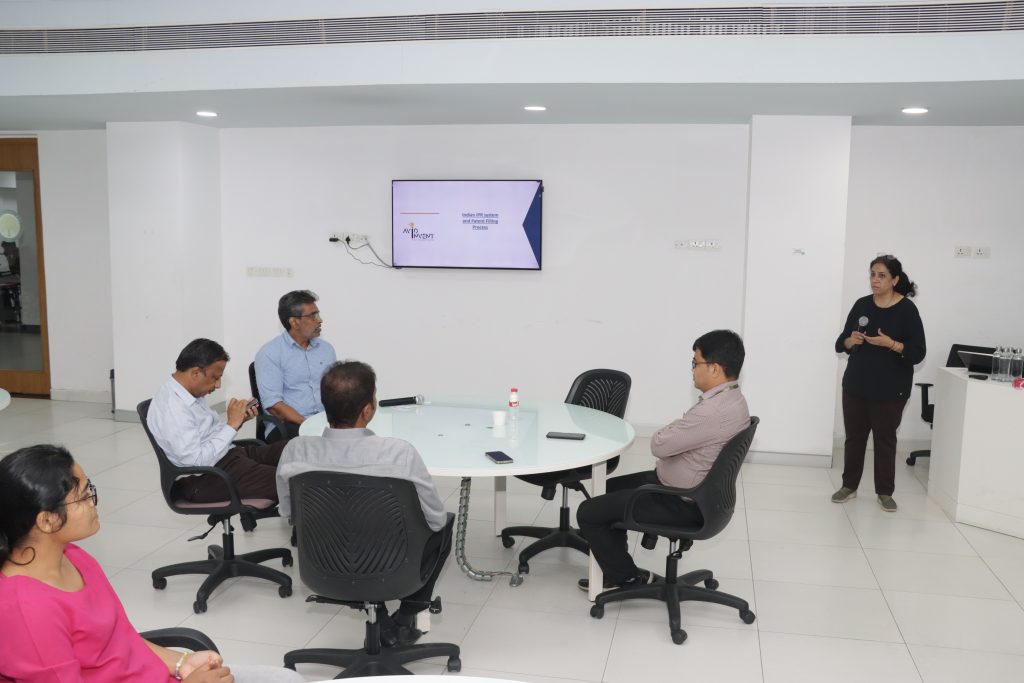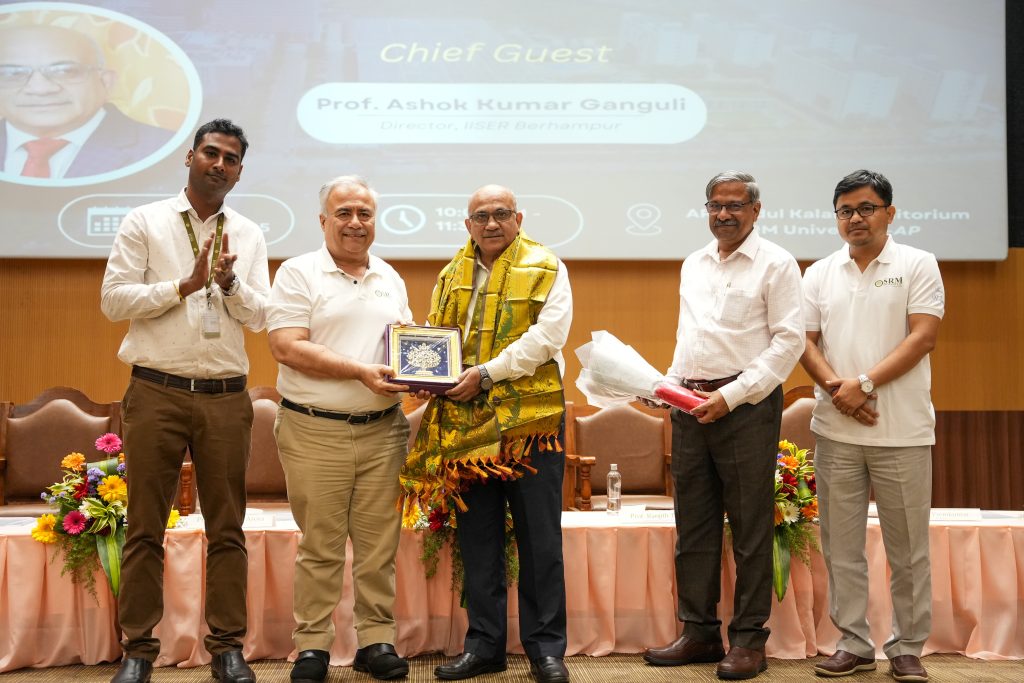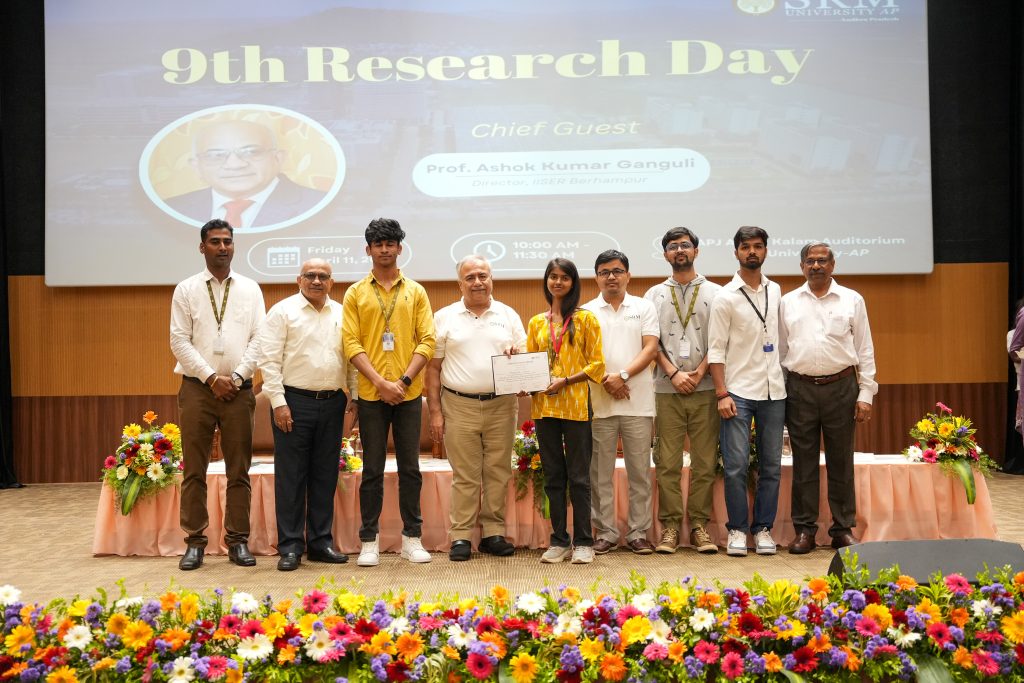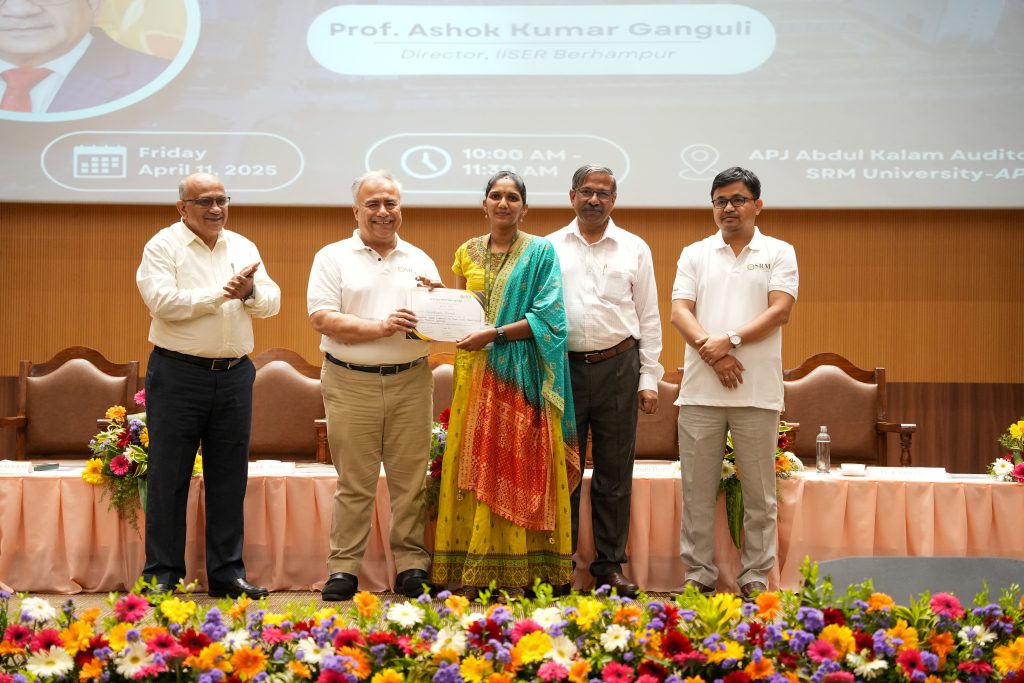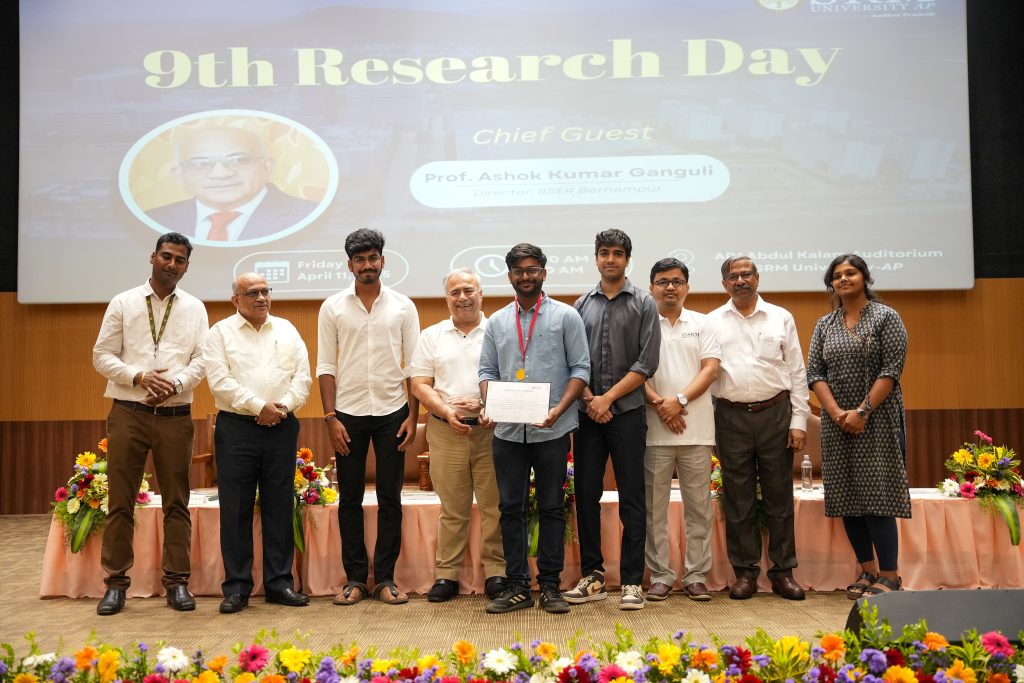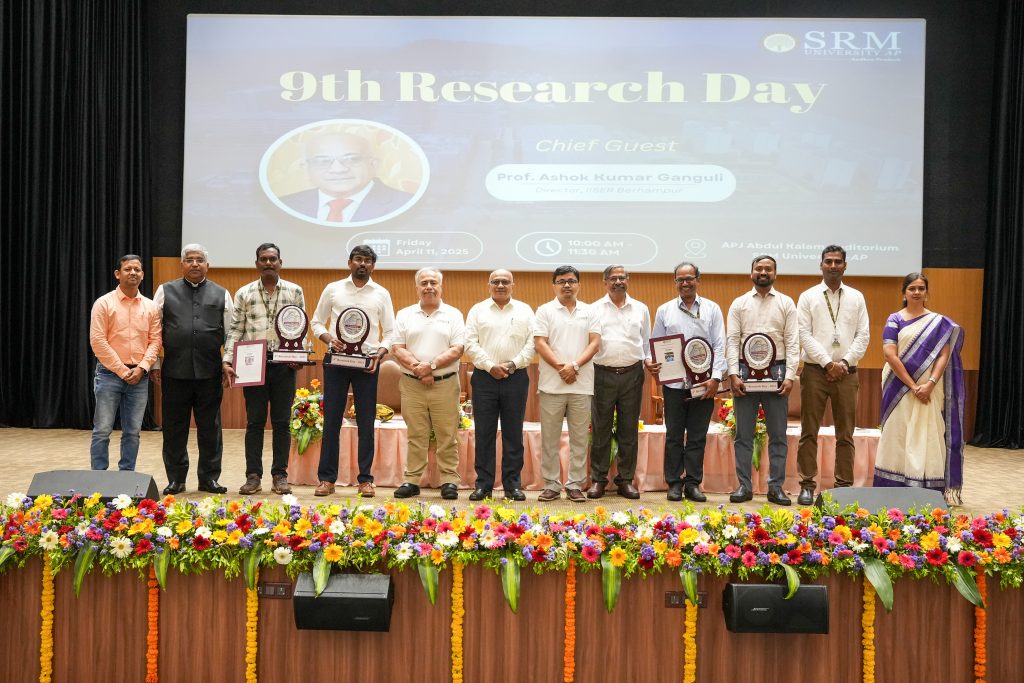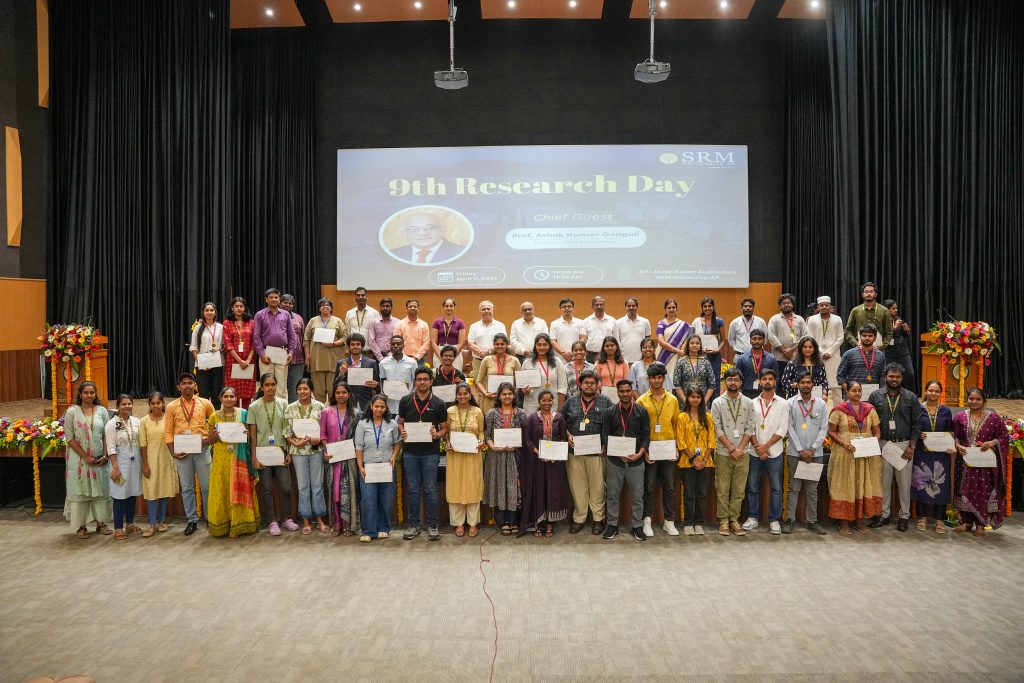Research News
- Revolutionising Food Safety: SRM AP Joins Hands with CraftZymes May 15, 2025
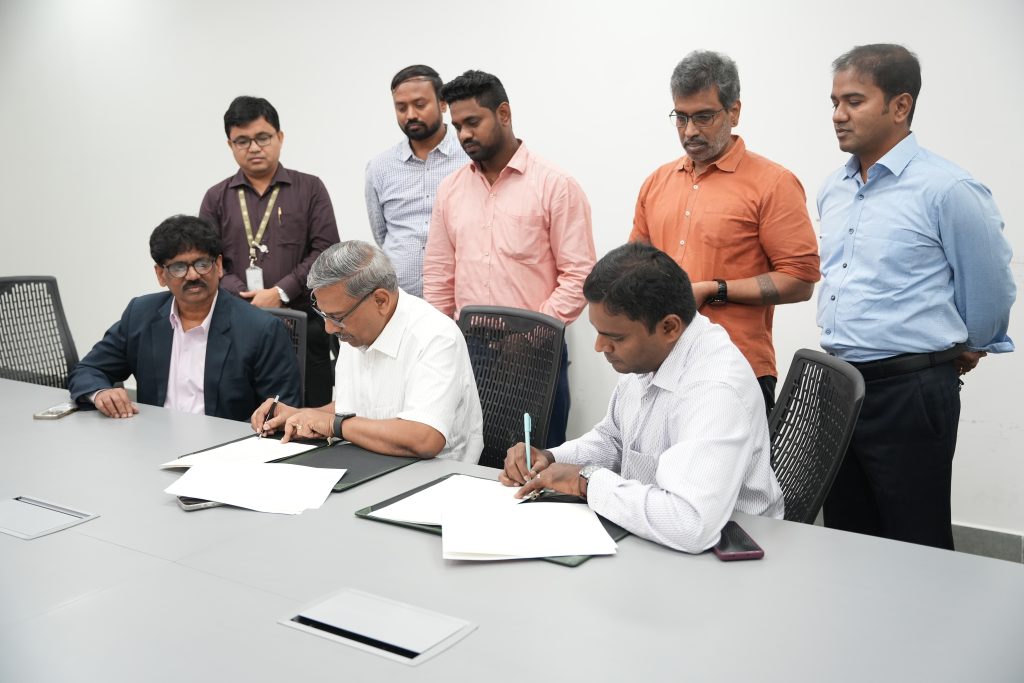
In a remarkable effort towards enhancing food safety and organic food authentication, SRM University-AP, Amaravati has entered into a collaborative research and development programme with CraftZymes Company Pvt. Ltd. The joint initiative, titled the “CraftZymes–SRM AP” Research Programme, focuses on the discovery and development of advanced technologies in the field of spectroscopy, specifically Surface Enhanced Raman Spectroscopy (SERS), for the detection of pesticide residues on food and raw materials. Formalising this partnership an MoU was signed in the presence of representatives from both parties.
As part of this collaboration, both entities have successfully developed a novel technology titled “Identification of Pesticide and Chemical Residues on Food Sources Using Surface Enhanced Raman Spectroscopy”. Recognising the potential impact of this innovation, SRM University-AP, and CraftZymes have agreed to file a joint patent application, marking a major milestone in their shared commitment to sustainable and safe food technologies.
The research aims to address critical challenges in detecting trace pesticide residues with high sensitivity, contributing to the authentication of food products labelled as organic.
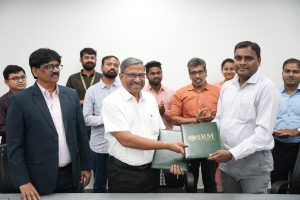
SRM-AP will serve as the host institution for all research activities, providing the necessary academic and infrastructural support to ensure the successful execution of the project. While CraftZymes, take the lead in customising the technology for real-world deployment. This includes conducting market and field studies to transform the core technology into user-friendly, field-deployable devices tailored to specific stakeholder needs. The startup will also spearhead commercialisation efforts to bring the technology to the marketplace.
This partnership highlights the shared commitment of both institutions to harnessing innovative scientific tools, such as SERS, to advance public health, support organic agriculture, and verify food authenticity. The jointly developed technology demonstrates their dedication to applying cutting-edge research to real-world challenges with meaningful impact.
Continue reading → - MSc Mathematics Student Secures Mitacs Globalink Research Award May 14, 2025
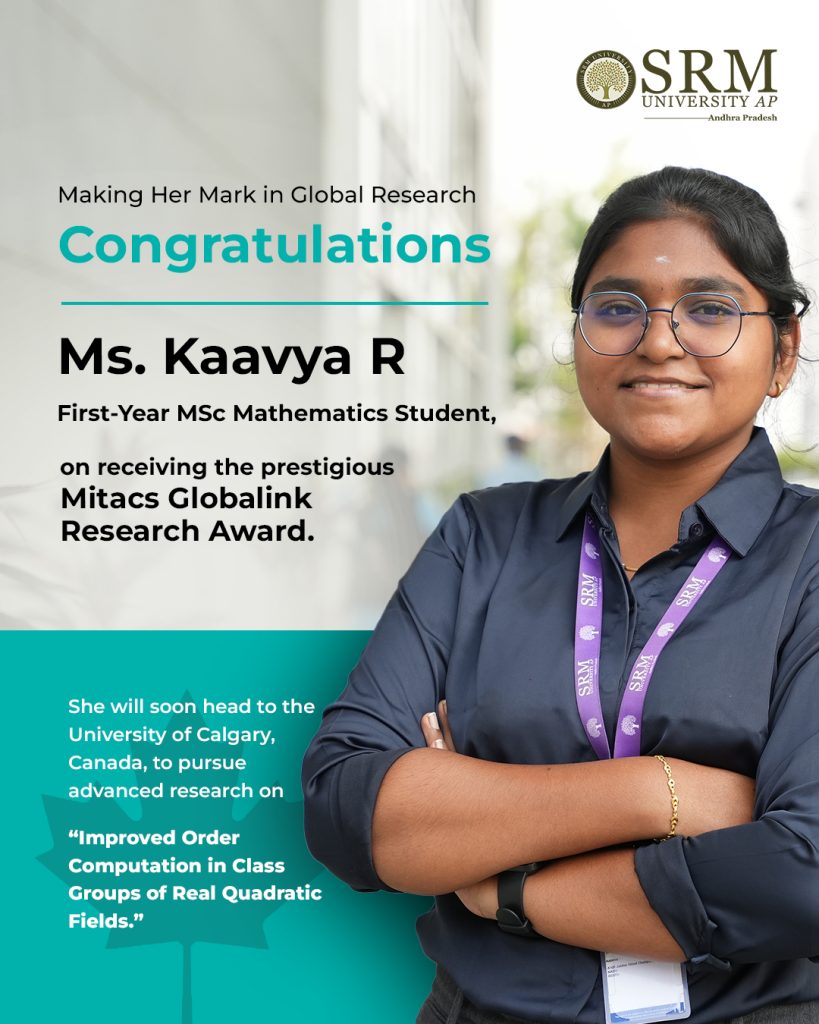
Ms Kaavya R, first-year MSc Mathematics student, has been awarded the prestigious Mitacs Globalink Research Award, a global award for international students. Under this honour, she will pursue a 12–24 week research project titled “Improved Order Computation in Class Groups of Real Quadratic Fields” at the University of Calgary, Canada, under the supervision of Prof. Michael John Jacobson. Prof. Kalyan Chakraborty, her mentor at SRM University-AP, continues to play a pivotal role in her academic journey.
This award offers a grant of $6,000 CAD (approx. ₹3,67,000) and marks Kaavya’s second major research opportunity, following her selection for the IASc-INSA-NASI Summer Research Fellowship, under which she will work at the Indian Statistical Institute, Bengaluru, with a monthly stipend of ₹12,500.
Kaavya credits her professors and department faculty for their constant support, especially Prof. Chakraborty, whose mentorship has helped shape her interests in number theory and research.
Kudos to Ms Kaavya for her remarkable achievement and continued success in exploring new mathematical horizons
Continue reading → - Analysing the Dynamism of AR Comics Through Ram Devineni’s Priya Series May 12, 2025
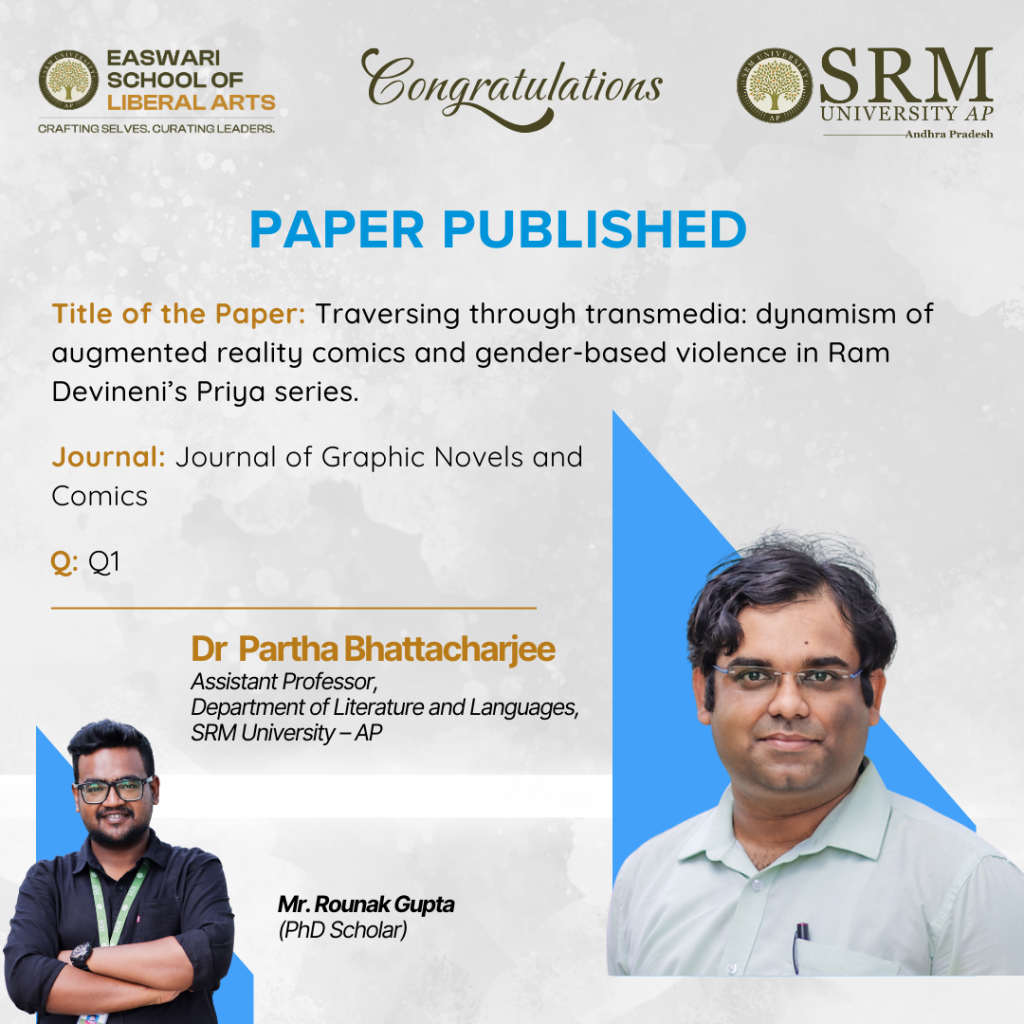
Dr Partha Battacharjee, Assistant Professor from the Department of Literature and Languages, and his PhD scholar Mr Rounak Gupta have published a research article titled “Traversing through Transmedia: Dynamism of Augmented Reality Comics and Gender-based Violence in Ram Devineni’s Priya Series” in the Q1 journal, Journal of Graphic Novels and Comics.
The paper points out how augmented reality can enhance the reading and receptive experience of comics that can address, teach, and educate people on complex social problems like gender-based violence.
Abstract
This article looks at how Ram Devineni’s comic series—Priya’s Shakti, Priya’s Mirror, and Priya and the Lost Girls—use augmented reality and Hindu mythology to raise awareness about gender-based violence in India. It shows how these comics break traditional storytelling methods to engage readers on serious issues like rape, acid attacks, and trafficking.
Practical Implementation/ Social Implications of the Research
It is an analytical research that helps understand how basic building blocks towards gender sensitisation can be developed using comics and augmented reality technology to ‘educate’ people in a much more immersive and interesting way.
The team will continue to develop a theoretical foundation for addressing transmedia approaches in comics and other seemingly static art forms.
Collaboration
Dr Priyanka Tripathi, Associate Professor, Department of Humanities and Social Sciences, IIT Patna
Continue reading →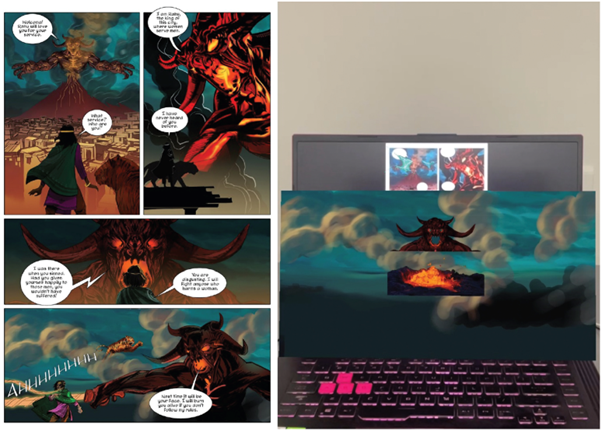
- Biofilm-forming Marine Bacteria and their Role in Plastic Degradation May 9, 2025
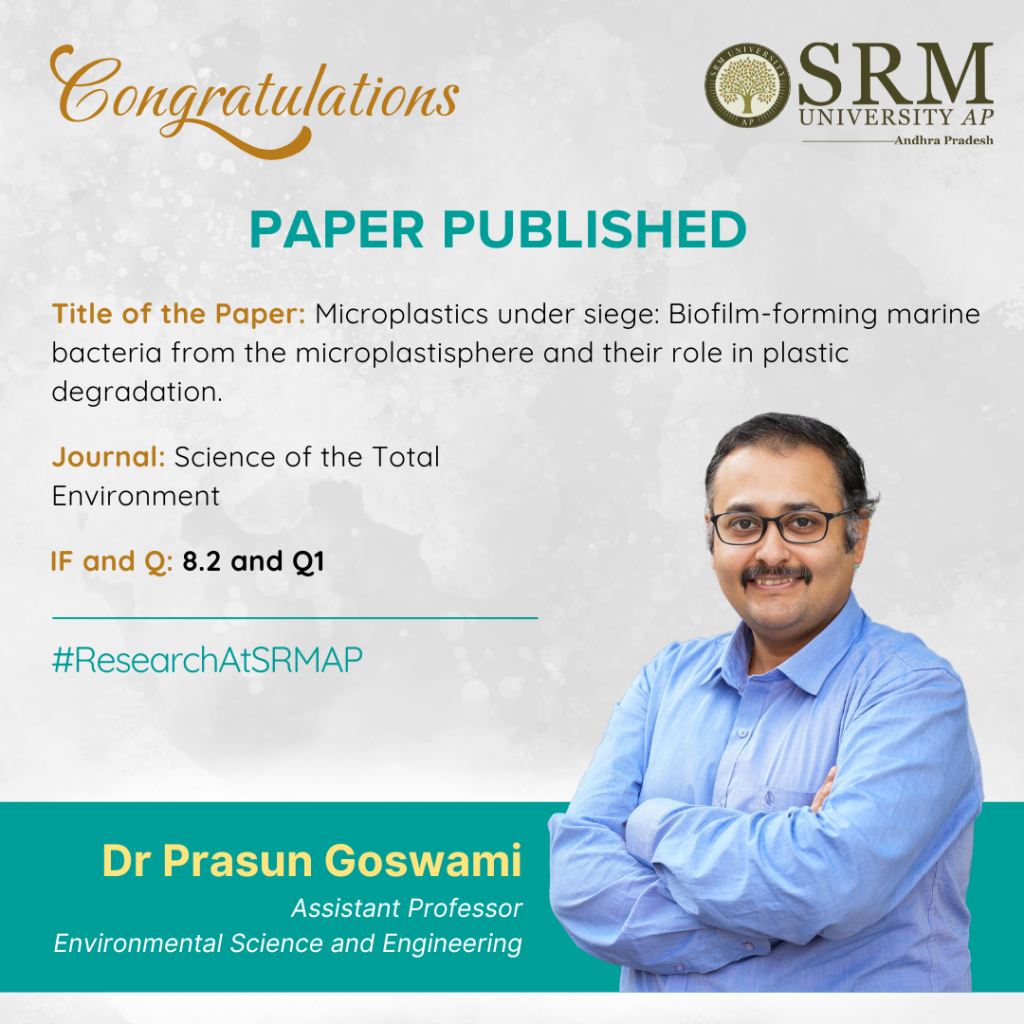
One of the major risks to the world’s ecosystems today is plastic pollution, it affects both the terrestrial and marine ecosystems alike. While India generates around 9.4 million tons of plastic annually, around 5.6 million tons are recycled, and the remaining 3.8 million tons goes uncollected or improperly disposed turning the country into a plastic pollution hotspot.
Addressing the existing gaps in understanding marine plastic and biodegradation which is the breakdown of these plastic materials by microorganisms, Dr Prasun Goswami, Assistant Professor, Department of Environmental Science and Engineering, has recently published a research paper titled “Microplastics Under Siege: Biofilm-forming Marine Bacteria from the Micro Plastisphere and their Role in Plastic Degradation”. The paper was published in the Q1 journal, Science of the Total Environment, with an Impact Factor of 8.2.
Over a period of time plastic debris degrade into smaller pieces, eventually forming microplastics (less than 5mm) which are increasingly found in water sources, including drinking water, and pose a potential threat to human health and aquatic life. Some studies suggest that ingested microplastics may have negative health effects, including reproductive damage. Microbial biodegradation has been regarded as one of the effective ways to deal with plastic pollution.
Abstract
Microplastics, laden with toxins and microorganisms, threaten marine ecosystems by affecting both living organisms and environmental processes. This study explores the diversity and plastic-degrading potential of culturable bacteria colonizing microplastics collected from three coastal sites of the Andaman and Nicobar Islands. Low-density polyethylene (LDPE) was the most prevalent polymer identified in the plastic debris. Among 24 bacterial isolates screened, strain NIOT-MP-52 demonstrated the highest LDPE degradation efficiency (10.79%) which means breaking down the plastic and was subjected to detailed characterization. Analytical techniques (FT-IR, SEM, AFM, DSC) confirmed microbial degradation through surface alterations and thermal changes. The findings underscore the promising role of marine bacteria in biodegrading plastics, offering potential solutions for sustainable plastic waste management.
Practical Implementations of the Research
This research offers a sustainable solution to marine plastic pollution by identifying native bacteria capable of degrading low-density polyethylene (LDPE), a common plastic pollutant. The most efficient strain, NIOT-MP-52, showed significant potential for breaking down plastic, indicating its practical use in eco-friendly bioremediation systems like biofilters or wastewater treatment setups. Socially, this approach supports healthier marine ecosystems, reduces human exposure to microplastics, and encourages nature-based waste management strategies, potentially creating green jobs in coastal communities.
Collaborations
This research was originally carried out at the Atal Centre for Ocean Science and Technology for Islands, National Institute of Ocean Technology, Ministry of Earth Sciences, Government of India, Sri Vijaya Puram, India. National Institute of Ocean Technology, Ministry of Earth Sciences, Government of India, Chennai, India.
Continue reading →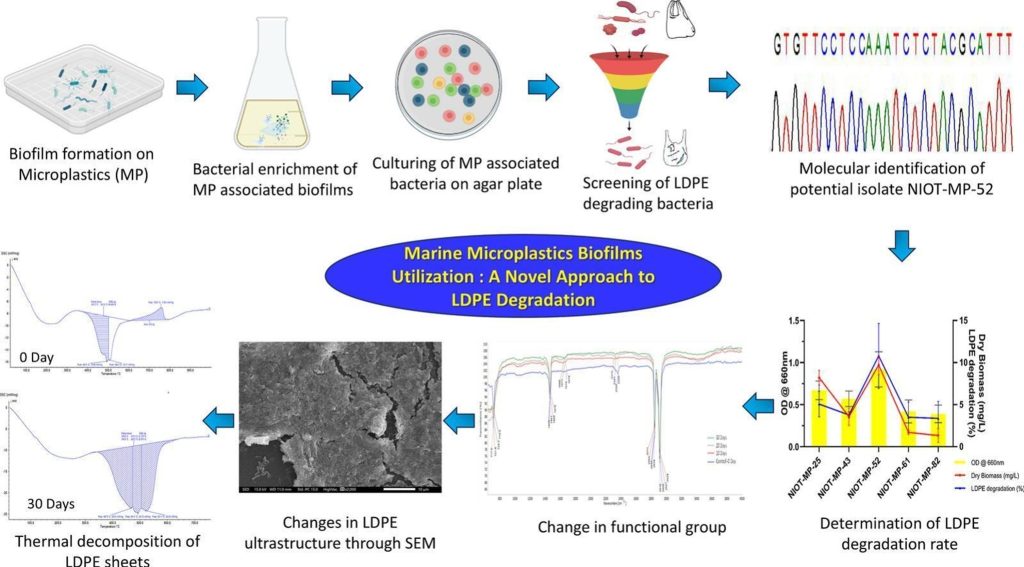
- Insights on Leptogenesis and Dark Matter Production April 30, 2025
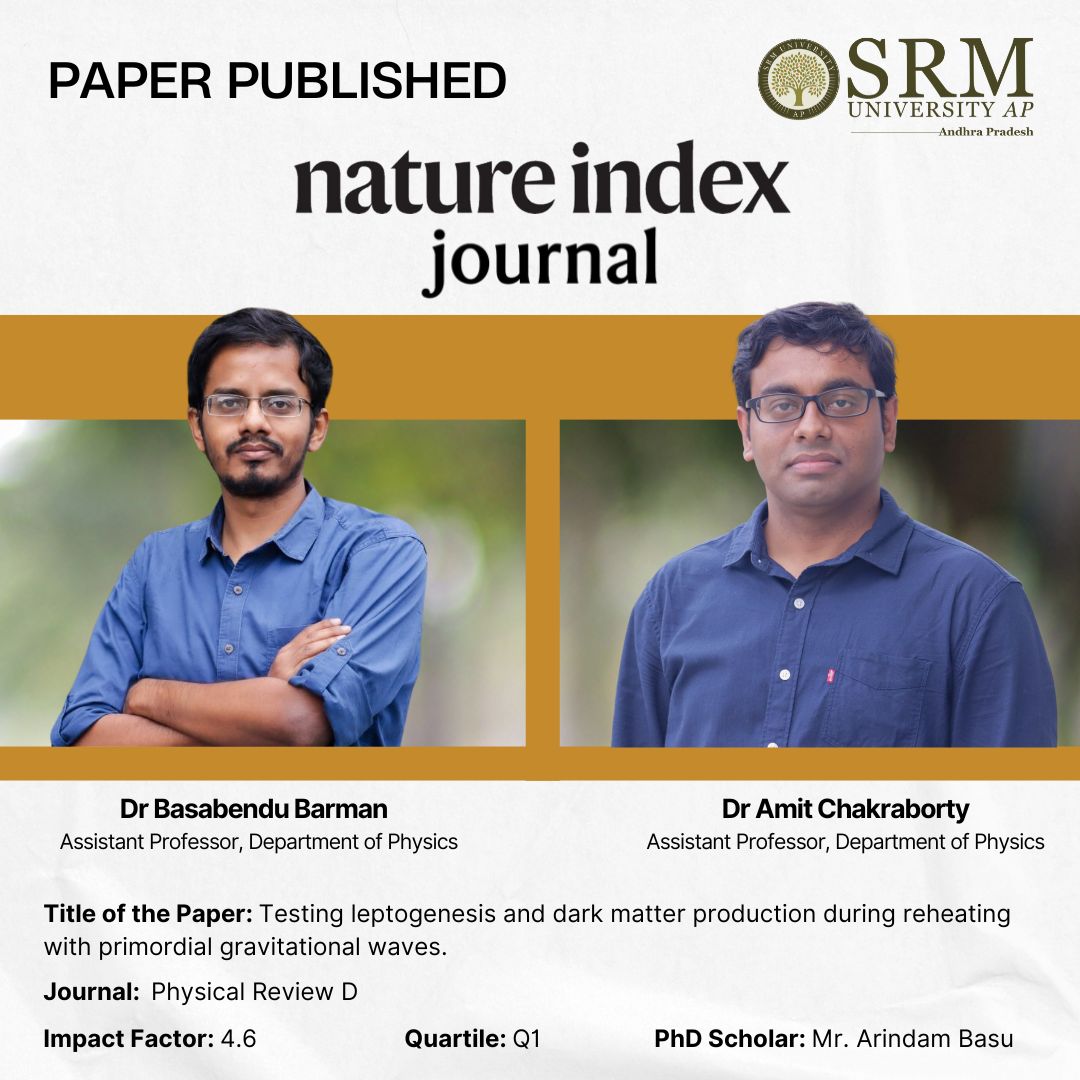 Dr Basabendu, Dr Amit Chakraborty, and Mr Arindam Basu from the Department of Physics at SRM University-AP jointly authored the study titled, “Testing leptogenesis and dark matter production during reheating with primordial gravitational waves” which was published in Physical Review D (Nature Index). The research looks into different monomial potentials and various decay processes of the inflaton field, providing important insights into fundamental cosmic events.
Dr Basabendu, Dr Amit Chakraborty, and Mr Arindam Basu from the Department of Physics at SRM University-AP jointly authored the study titled, “Testing leptogenesis and dark matter production during reheating with primordial gravitational waves” which was published in Physical Review D (Nature Index). The research looks into different monomial potentials and various decay processes of the inflaton field, providing important insights into fundamental cosmic events.Abstract:
We study the generation of baryon asymmetry as well as dark matter (DM) in an extended reheating period after the end of slow-roll inflation. Within the regime of perturbative reheating, we consider different monomial potential of the inflaton field during reheating era. The inflaton condensate reheats the Universe by decaying into the Standard Model (SM) bath either via fermionic or bosonic decay modes. Assuming the leptogenesis route to baryogenesis in a canonical seesaw framework with three right handed neutrinos (RHN), we consider both the radiation bath and perturbative inflaton decay to produce such RHNs during the period of reheating when the maximum temperature of the SM bath is well above the reheating temperature. The DM, assumed to be a SM gauge singlet field, also gets produced from the bath during the reheating period via UV freeze-in. In addition to obtaining different parameter space for such nonthermal leptogenesis and DM for both bosonic and fermionic reheating modes and the type of monomial potential, we discuss the possibility of probing such scenarios via spectral shape of primordial gravitational waves.
Practical Implementations & Social Impact:
Imagine the early universe as a giant, chaotic fireball after the Big Bang. But before things settled down into the stars and galaxies we see today, the universe went through a phase called inflation—a rapid expansion driven by a field called the inflaton. Once inflation ended, the inflation’s energy had to somehow convert into all the particles that make up our universe. This process is called reheating. In this study, we explore what happens if reheating takes longer than usual, extending well beyond what’s typically assumed. We look at different ways the inflaton could decay—either into particles like fermions (similar to electrons) or bosons (like the Higgs boson)—and how this affects the formation of two big cosmic mysteries: the matter-antimatter asymmetry (baryon asymmetry) and dark matter. We analyse how different inflaton decay mechanisms and different types of inflaton energy landscapes (represented by mathematical potentials) influence these processes. Beyond just predicting what parameters could make this scenario work, we also suggest a possible way to test it: by looking at primordial gravitational waves, ripples in spacetime left over from the early universe. Their specific features might reveal hints about how reheating played out, offering a new way to probe the origins of matter and dark matter.
This study is not just about abstract physics—it’s about our origins. Understanding how matter and dark matter formed in the early universe connects directly to our existence and could shape future discoveries in physics, technology, and space exploration. Whether it’s through deep-space telescopes, gravitational wave detectors, the quest to understand the first moments of the universe is one that could transform the way we see our place in the cosmos.
Collaborations:
This work has been done in collaboration with Dr Amit Chakraborty and Mr Arindam Basu from the Department of Physics, SRM University-AP
Future Plans:
A closer look at early universe dynamics by performing more involved simulations.
Connection between particle physics models and early Universe cosmology.
Complementary searches from different experiments in unravelling new physics beyond the Standard Model. Searching for new physics at the energy and intensity frontier.Link: https://journals.aps.org/prd/abstract/10.1103/PhysRevD.111.055016
Continue reading → - Research on High-Performance Metal-Free Catalyst April 30, 2025
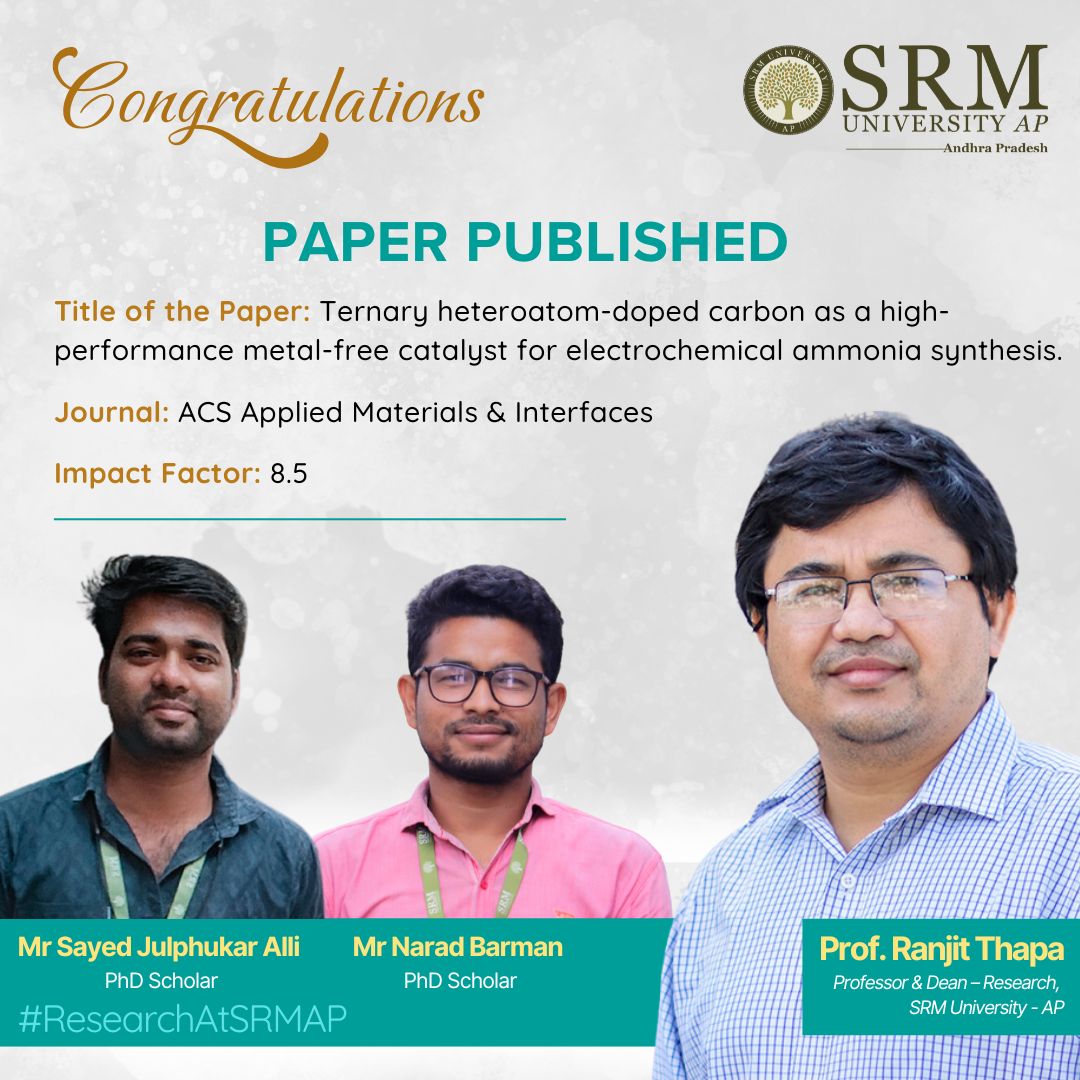 In the paper titled “Ternary Heteroatom-doped Carbon as a High-performance Metal-free Catalyst for Electrochemical Ammonia Synthesis.” by Prof. Ranjit Thapa and his research Scholars, a novel approach to enhance nitrogen reduction reactions (NRR) is explored. This research, published in ACS Applied Materials & Interfaces, investigates the potential of nitrogen-doped carbon materials further enhanced by the incorporation of boron and fluorine heteroatoms. The study reveals significant advancements in electrocatalytic performance, emphasising the importance of efficient and sustainable ammonia production.
In the paper titled “Ternary Heteroatom-doped Carbon as a High-performance Metal-free Catalyst for Electrochemical Ammonia Synthesis.” by Prof. Ranjit Thapa and his research Scholars, a novel approach to enhance nitrogen reduction reactions (NRR) is explored. This research, published in ACS Applied Materials & Interfaces, investigates the potential of nitrogen-doped carbon materials further enhanced by the incorporation of boron and fluorine heteroatoms. The study reveals significant advancements in electrocatalytic performance, emphasising the importance of efficient and sustainable ammonia production.Abstract :
Electrochemical nitrogen reduction reaction (NRR) has garnered much attention, but the major challenge remains with efficient electrocatalysts. Metal-free carbonaceous materials, doped with heteroatoms and structural defects, present a promising alternative to metal-based catalysts. This study introduces a novel strategic stepwise synthesis strategy of defective nitrogen-doped carbon material, further doped with secondary heteroatoms boron and fluorine (FBDG). These secondary atoms in combination create additional active sites for nitrogen adsorption, activation and suppress the hydrogen evolution reaction (HER). The synergistic effect of three heteroatoms and induced defects in the catalyst enhances electron-donor behaviour, improving π bonding within the carbon framework and facilitating the electron transfer processes during NRR, resulting in a significantly high Faradaic efficiency of 38.1 % in the case of metal-free electrocatalysts. The theoretical calculation reveals that FBDG possesses sufficient charge density to reduce nitrogen at a low overpotential following an alternating free energy pathway. The reaction intermediates are thereby identified by in situ ATR-FTIR studies. For rapid screening of ammonia, we used a rotating ring disk system (RRDE) and did a kinetic study. The high efficiency, stability, and cost-effectiveness of FBDG position it as a strong contender for sustainable ammonia production and open up the way for future advancements in NRR.Practical implementation:
The practical implementation of your research or the social implications associated with it.The FBDG catalyst achieved a remarkable Faradaic efficiency of 38.1 %. Theoretical studies confirmed that FBDG has a low overpotential, thereby increasing its appropriateness for NRR. The incorporation of fluorine and boron through co-doping in N-doped defective material enhances the N2 absorption energy, and from the charge density difference, we showed improved electron delivery from the host surface to the intermediate, which is essential for breaking the strong triple bond in N2 molecules, enhancing NRR. This work not only introduces a novel catalyst design strategy but also provides deep insights into the synergistic effects of heteroatom doping and defect engineering, paving the way for more efficient and sustainable ammonia production.Collaborations
Dr Ramendra Sunder Dey, Assistant Professor (Scientist-D), INSA Associates, Institute of Nano Science and Technology, Mohali
Continue reading → - Dr Priyanka Singh and Students Collaborate on Innovative Approach of Image Retrieval April 30, 2025
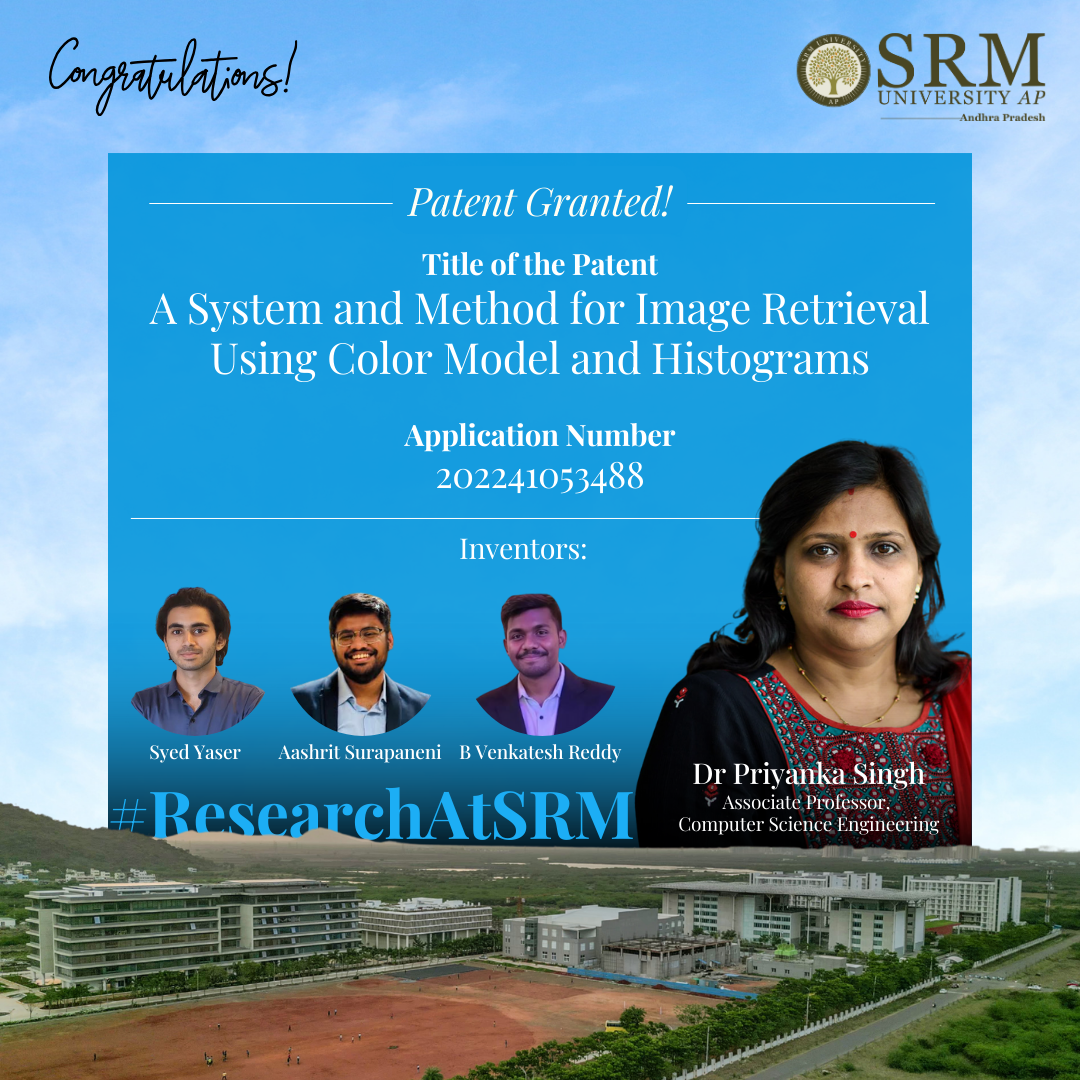 The patent titled “A System and Method for Image Retrieval Using Color Model and Histograms“, with application number 202241053488, presents a novel approach to image retrieval. Authored by Syed Yaser, Sai Aashrit Surapaneni, and B Venkatesh Reddy, with guidance from Dr Priyanka Singh, Associate Professor, Department of Computer Science and Engineering, this work explores the efficient and effective retrieval of images from large databases. The findings contribute significantly to advancements in various fields, including medical imaging and digital libraries.
The patent titled “A System and Method for Image Retrieval Using Color Model and Histograms“, with application number 202241053488, presents a novel approach to image retrieval. Authored by Syed Yaser, Sai Aashrit Surapaneni, and B Venkatesh Reddy, with guidance from Dr Priyanka Singh, Associate Professor, Department of Computer Science and Engineering, this work explores the efficient and effective retrieval of images from large databases. The findings contribute significantly to advancements in various fields, including medical imaging and digital libraries.Abstract:
Content Based Image Retrieval; a widely researched area in the past few decades when it comes to image retrieval and searching images in a large database. The proposed scheme is based on Hue, Saturation, Value (HSV) components of an image and compares images by calculating the distance between histograms is used to implement CBIR using global and local comparison. Histogram of hue and saturation is generated for global comparison. The image in the database which has the minimum distance to our query image is the most similar image of all images. Which means when the distance is 0 the query image is the same as the target image which concludes the image retrieval process. The above algorithm has been completely implemented using python. Python was chosen because of its inbuilt libraries like cv2 for image processing, numpy for mathematical calculations and matplotlib for visualisation
Practical Implementation:
The system can be applied in various fields like medical imaging, digital libraries, surveillance, and e-commerce platforms where quick and accurate image search is necessary. It can also enhance accessibility tools for the visually impaired by recognising images based on content.
Collaborations:
This project was done with the support and guidance of professors and fellow students from the Department of Computer Science and Engineering at SRM University AP, Amaravati. The main team from SRM included:
Syed Yaser
Sai Aashrit Surapaneni
B Venkatesh Reddy
Dr Priyanka
Dr Naushad Varish from Koneru Lakshmaiah Education Foundation, Guntur, also made significant contributions to the work.
Continue reading → - IPR & Commercialisation Awareness with Dr Puneeta Arora April 29, 2025
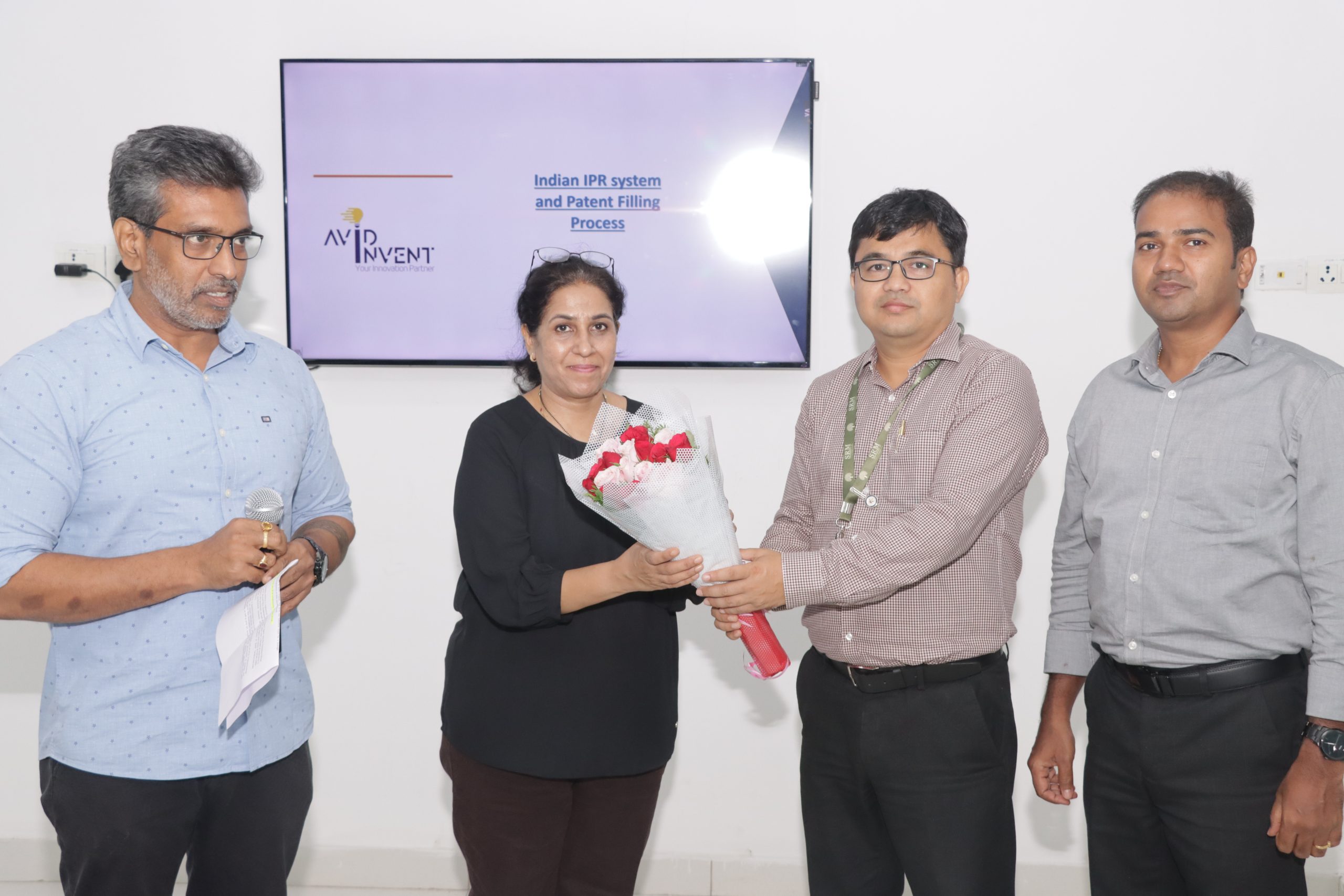 A workshop on “IPR & Commercialization Awareness” was organised jointly by the Technology Transfer Cell and the Office of Dean Research. The session was led by Dr Puneeta Arora, Founder of AvidInvent, a registered Indian Patent Agent, and a seasoned expert in patent law and innovation strategy. The event aimed to raise awareness on the protection of Intellectual Property Rights among researchers.
A workshop on “IPR & Commercialization Awareness” was organised jointly by the Technology Transfer Cell and the Office of Dean Research. The session was led by Dr Puneeta Arora, Founder of AvidInvent, a registered Indian Patent Agent, and a seasoned expert in patent law and innovation strategy. The event aimed to raise awareness on the protection of Intellectual Property Rights among researchers.The workshop commenced with an introduction to the fundamentals of IPR and the importance of protecting innovations with the help of mechanisms like design registration, copyrights, patents, and more. Dr Arora laid emphasis on protecting your innovations from the ideation stage and discussed the filing of provisional patents. She also provided a step-by-step breakdown of the Indian patent application workflow, along with an explanation of PCT and Conventional Applications for researchers looking to file patents abroad.
The session addressed crucial aspects of patentability, such as the importance of novelty, the concept of non-patentable subject matter, prior art, and obviousness. Dr Arora contextualised these concepts with the help of real-world examples and explained how strategic thinking can influence patenting decisions. Additionally, a dedicated segment on IPR in the life sciences was held, which focused on elements specific to the fields of agriculture, wellness, medical sciences, etc., with the help of case studies. This offered valuable insight to participants with backgrounds in biosciences and biotechnology.
The workshop concluded with an interactive Q&A session, where Dr Arora had a discussion with participants on their personal research projects and potential IP applications. Dr Arora was felicitated by Prof. Ranjit Thapa, Dean Research, in recognition of her invaluable contributions. The workshop encouraged participants and raised awareness on IPR, patent literacy, and commercialisation strategies.
Continue reading → - “Original Creative Research Will Outsmart AI” – Prof. Ganguli Addresses SRM AP on the 9th Research Day April 15, 2025
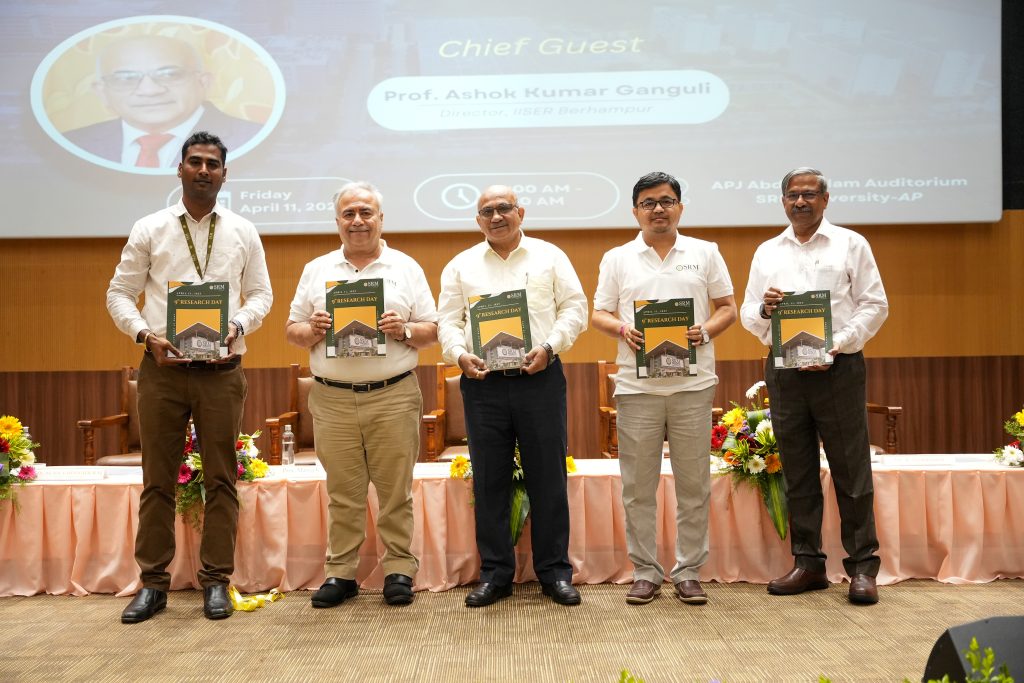
SRM University-AP commemorated its signature event, Research Day Ninth edition, on April 11, 2025, celebrating the relentless spirit of enquiry, excellence and innovation. The esteemed event witnessed the gracious presence of Prof. Ashok K Ganguli, Director-IISER Berhampur, Odisha, as the chief guest along with the university leadership Vice Chancellor, Prof. Manoj K Arora, Registrar Dr R Premkumar, Dean-Research Prof. Ranjit Thapa, Research Day Convenor Dr Sunil Chinnadurai, Deans of other schools, faculty, staff and students.
In his welcome address, Prof. Manoj Arora elucidated the significance of research and innovation in the university’s academic structure and plan to achieve institutional excellence. He stated, “Research Day is fundamentally a platform to identify talented students who have the potential to work on innovative ideas that can be implemented to benefit society.” He also mentioned the future prospects of establishing a Ratan Tata Innovation Hub in Amaravati, where SRM AP will play a pivotal role in one of the five spokes.
Prof. Ganguli, an experienced researcher and scientist, appreciated Research Day as a pioneering initiative by SRM AP to promote a vibrant research culture across all academic levels. He said, “With a faculty pool with excellent pedigree, international exposure and a strong research acumen, SRM University-AP is on the right path to academic and research excellence.” He also discussed the transformation of teaching and research in the future years, emphasising that in the era of the AI revolution, novel, innovative research and creativity will triumph over robotic intelligence.
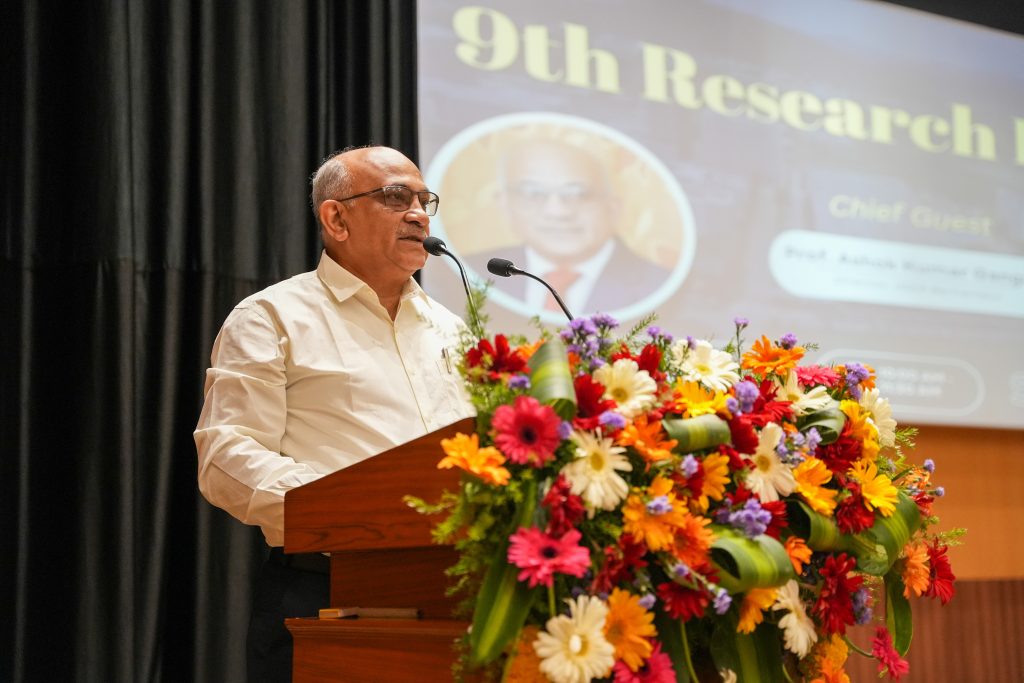
The event revealed the abstract book comprising 263 UG/PG and 131 PhD abstracts in more than 30 thematic areas. 17 students were awarded gold medals, and 5 were awarded silver medals in the UG/PG category. In the PhD category, 10 scholars won the gold medals, and 5 won the silver medals.
For their outstanding contribution to cutting-edge research, selected faculty members of SRM AP were recognised with Best Researcher Awards. Dr Pardha Saradhi M was honoured with the Best Experimental Researcher Award, Dr Murali Krishna E with the Best Theoretical Researcher Award, Dr Dinesh Reddy V with the Best Industrial Researcher Award and Dr Harish Puppala with the Best Young Researcher Award. The faculty were felicitated with a memento and a cash prize of Rs 50,000/- for their high-quality research.
The 9th Research Day has successfully concluded, celebrating talent, perseverance, and innovation. With an unwavering commitment to interdisciplinary research and international collaborations, SRM University-AP advances to the frontiers of academic and research excellence.
Continue reading → - CSE Professors Research on Automated Agricultural Spraying April 10, 2025
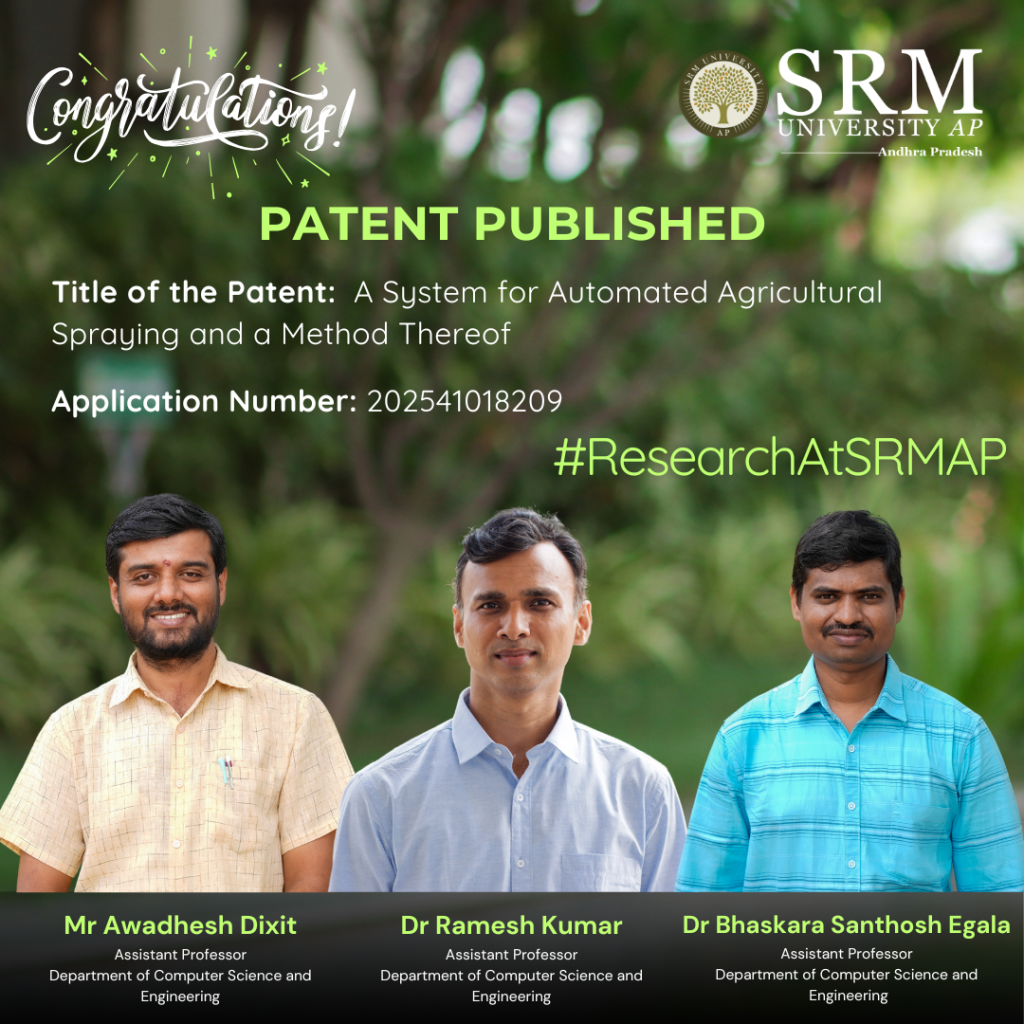 This research, titled “A System for Automated Agricultural Spraying and a Method Thereof,” focuses on developing a coordinated multi-UAV framework for precision agricultural spraying. Led by Dr Awadhesh Dixit and his faculty team, Dr Ramesh Kumar, and Dr Bhaskara Santosh Egala, Assistant Professors at the Department of Computer Science and Engineering, this innovative research enhances efficiency in crop management by utilising advanced technologies for real-time data integration and optimisation.
This research, titled “A System for Automated Agricultural Spraying and a Method Thereof,” focuses on developing a coordinated multi-UAV framework for precision agricultural spraying. Led by Dr Awadhesh Dixit and his faculty team, Dr Ramesh Kumar, and Dr Bhaskara Santosh Egala, Assistant Professors at the Department of Computer Science and Engineering, this innovative research enhances efficiency in crop management by utilising advanced technologies for real-time data integration and optimisation.Abstract
This invention presents a novel system and process for precision agricultural spraying using a coordinated multi-UAV (Unmanned Aerial Vehicle) framework. The system integrates multiple UAVs equipped with sensors (e.g., LiDAR, ultrasonic) and spraying mechanisms, managed by a central control unit employing hybrid approach combining PSO, Fuzzy Logic, and Reinforcement Learning (RL) for efficient real-time multi-UAV coordination. The hybrid system dynamically adapts to environmental conditions, ensuring optimal path planning, collision avoidance, and spray adjustments. The process involves real-time data collection on crop density, environmental conditions, and obstacles, enabling dynamic flight path planning and adaptive spray rate adjustments. Key innovations include the use of advanced control software for UAV coordination, obstacle avoidance, and uniform pesticide application, combined with hardware featuring adjustable spraying devices. This approach enhances efficiency, reduces collision risks, and ensures precise coverage in complex agricultural environments, distinguishing it from prior UAV-based spraying systems through its sophisticated integration of real-time optimization and multi-UAV collaboration.
Explanation in layperson’s terms
Imagine a team of small flying robots (drones) working together to spray crops on a farm. First, they use their cameras and sensors to check the fields, figure out where the bugs or weeds are, and spot anything in the way, like trees or fences. Then, they plan the best paths to fly so they don’t crash and can cover everything evenly. Each drone has a sprayer that can change how much it sprays depending on what the crops need—like giving extra spray where there are more bugs. A smart computer program helps them talk to each other and decide what to do as they go. This makes farming easier, faster, and wastes less spray compared to older ways.
We have created a way to use drones to spray crops with bug-killing chemicals more smartly. One drone checks the fields first to spot where the bugs are worst. Then, other drones with special sprayers fly over and target those spots, spraying two rows at once to save time. If they find a really buggy area, they hover there longer to make sure it’s fully covered. The drones communicate and coordinate to each other and dodge trees or other obstacles, so farmers don’t have to do it all by hand.The hybrid system operates by continuously integrating PSO, Fuzzy Logic, and RL during UAV operations to achieve optimal coordination and performance. First, one part of the system—think of it like a master planner—figures out the best paths for the drones to fly based on what the farm looks like, like where the crops are and what’s in their way. Then, another part acts like a quick fixer—it tweaks those paths on the fly if something unexpected pops up, like thicker crops or a tree the drones didn’t see at first. It also adjusts how much spray the drones use so they don’t overdo it. Finally, there’s a learning part that helps the drones get better over time—like they remember what worked before and adapt to changes, such as growing plants or windy days. Together, this makes the drones super-efficient: they don’t bump into each other, they spray just the right amount, and they keep figuring out the best way to handle whatever the farm throws at them—all on their own.
Practical Implementation of the Research
A. Test Environment and UAVs
Field Setup:
Location: A 100-acre test field with varying crop densities (rice, wheat, and maize) and obstacles such as trees, irrigation systems, and terrain elevations.
Environmental Conditions: Tested under different weather conditions (sunny, windy, and overcast).
UAV Model:
Five multi-rotor UAVs equipped with spraying equipment, GPS, LIDAR sensors for obstacle detection, and onboard processing units to run the hybrid optimization algorithms.
Battery Life: 30-minute flight time with a 5kg payload capacity.
Communication: UAVs communicate via a wireless mesh network with a ground control system for real-time adjustments.
Each drone would also have a dual-spray setup—two adjustable nozzles attached to a tank holding pesticide or fertilizer, capable of spraying two rows of crops at once.
B. Hybrid Optimisation Algorithm
PSO for Path Planning:
Determines the optimal flight path based on crop density, UAV location, and environmental data.
Fuzzy Logic for Spray Adjustment:
Dynamically adjusts the spray level based on crop health data, wind speed, and UAV altitude.
Reinforcement Learning for Collision Avoidance:
UAVs learn from previous flight paths and environmental feedback to avoid collisions with other UAVs and obstacles.
Future Research Plans
Their future research focuses on developing swarm-based D2X communication and coordination, task rescheduling, localization, and optimized path planning to enhance UAV network performance, prevent collisions, and advance AI-related applications.
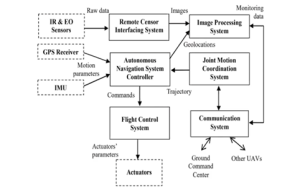
Figure 1: Block diagram of Multi-UAV Coordination path planning and coordination among multiple UAVs in an agricultural field.
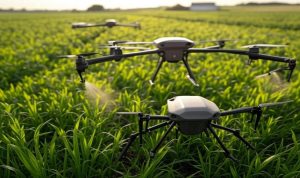
Figure 2: Diagram illustrating drone spraying in agriculture field with obstacle avoidance
Continue reading →


